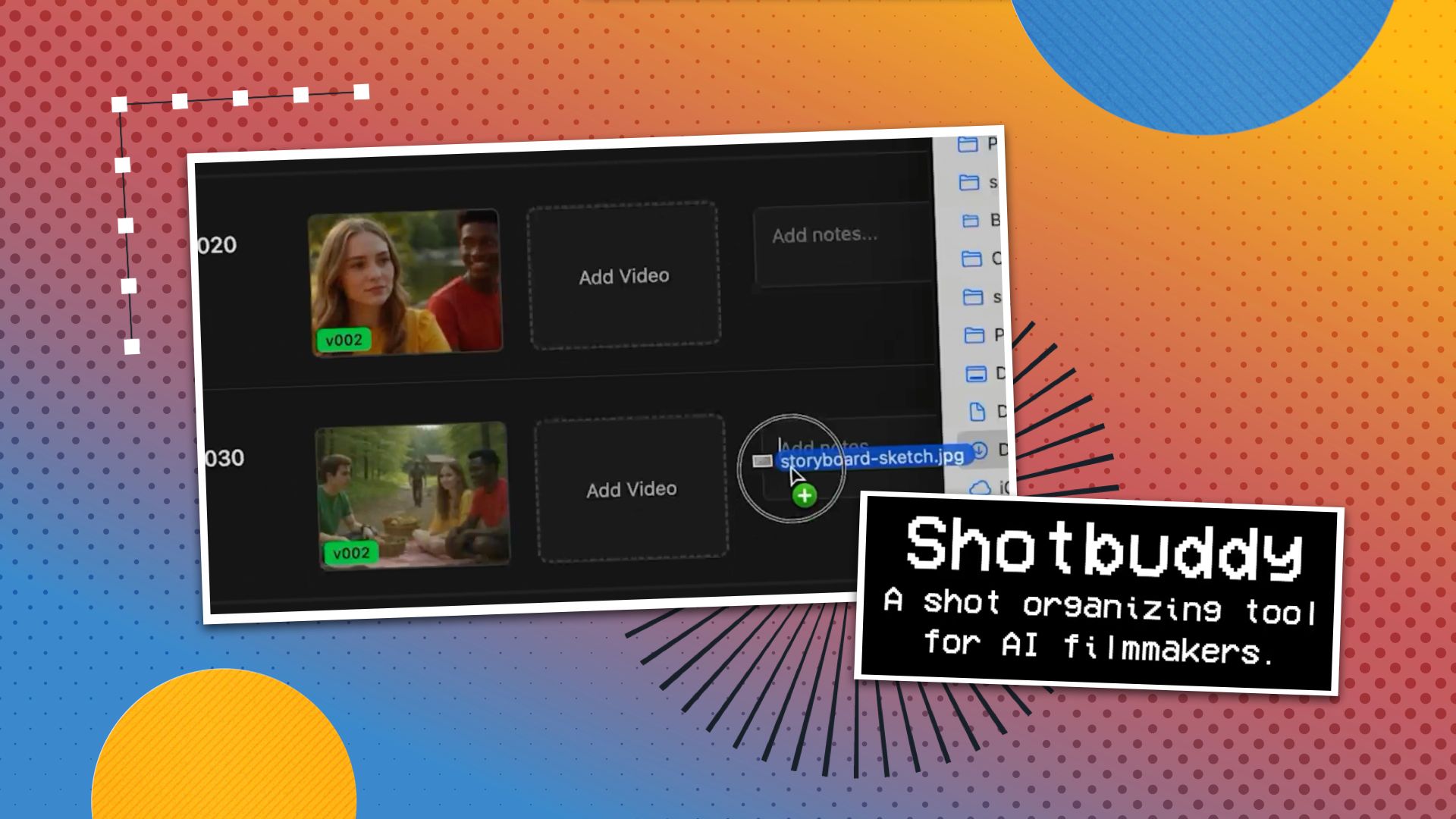As AI-generated video becomes mainstream in filmmaking, creators face a new problem: managing the chaos of countless iterations, versions, and assets that these powerful new tools produce. An open-source solution called Shotbuddy aims to bring structure to the creative mayhem, offering filmmakers a way to organize their AI-driven projects without losing track of their best work.
Structured Shot Management: Organizes AI-generated assets with version tracking and project control.
Open-Source Flexibility: Compatible with multiple AI video generation platforms, not locked to a single ecosystem.
Workflow Solution: Addresses the practical challenges of managing rapid iterations in AI-assisted filmmaking.
Managing the AI Video Revolution: Creative control meets technical complexity
The explosion of AI video generation tools like Runway, Pika Labs, and Google Flow has created an unexpected challenge for filmmakers. While these platforms can produce stunning footage in minutes, they also generate massive amounts of content that needs organizing, versioning, and tracking.
Albert Bozesan recognized this workflow gap and developed Shotbuddy as a solution. The application addresses what many creators discover after their first AI video project: the tools are incredibly powerful, but managing their output requires dedicated workflow management.
Traditional filmmaking workflows weren't designed for the rapid iteration cycles that AI enables. Where a conventional shoot might produce a dozen takes of a scene, AI generation can create hundreds of variations in the same timeframe. This volume creates new challenges around organization, comparison, and decision-making that existing production tools weren't built to handle.
Version Control Meets Creative Iteration: Tracking the evolution of AI-generated content
Shotbuddy's core strength lies in its approach to version management specifically designed for AI video workflows. Unlike traditional editing software that focuses on assembling final cuts, this tool emphasizes the creative process itself - helping filmmakers track, compare, and refine the multiple iterations that AI generation makes possible.
The platform organizes shots systematically, allowing creators to:
Track multiple versions of each shot or scene with clear hierarchical organization
Manage AI-generated assets from various platforms in a unified workspace
Support creative branching where filmmakers can explore different visual approaches without losing previous work
Maintain project coherence across the dozens or hundreds of assets typical AI projects generate
This organizational structure becomes critical when working with tools like Google Flow or Shai Creative, where a single scene prompt might generate multiple compelling options that each deserve consideration and potential development.
Open-Source Advantage: Breaking free from platform lock-in
While major AI video platforms like Runway and Pika offer their own organizational features, Shotbuddy's open-source nature provides platform independence that many creators find valuable. Rather than committing to a single AI generation ecosystem, filmmakers can use Shotbuddy to manage assets from multiple sources.
This flexibility matters as the AI video landscape continues evolving rapidly. New platforms launch regularly, each with unique strengths - some excel at character consistency, others at environmental realism, still others at specific visual styles. Creators who want to use the best tool for each shot rather than settling for one platform's limitations benefit from Shotbuddy's agnostic approach.
The open-source model also means the tool can evolve based on actual user needs rather than corporate priorities. As AI filmmaking workflows mature and creators identify new pain points, the community can adapt and extend Shotbuddy's capabilities accordingly.
Practical Implementation: Solving real workflow problems
Current AI video tools excel at generation but often fall short on the practical aspects of production management. Shotbuddy fills this gap by addressing the everyday challenges creators face when working with AI-generated content at scale.
The application recognizes that AI video projects have different organizational needs than traditional shoots. Creative control becomes more important when you can generate unlimited variations, but that same abundance can become overwhelming without proper structure. Shotbuddy provides the framework that lets creators take advantage of AI's generative power without drowning in options.
Project versioning becomes particularly crucial in AI workflows where small prompt adjustments can yield dramatically different results. Rather than losing promising creative directions, filmmakers can maintain multiple branches of development and return to earlier iterations when needed.
As AI video generation continues improving - with better consistency, longer clips, and more precise control - the challenge shifts from "can we generate good footage" to "can we manage the creative process effectively." Shotbuddy addresses this next-level challenge, suggesting that the future of AI filmmaking depends as much on workflow innovation as on generation technology.


